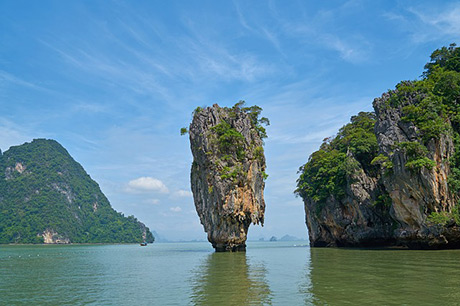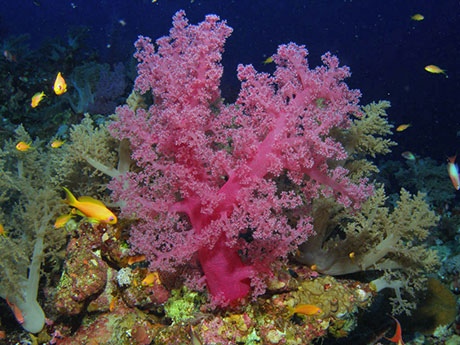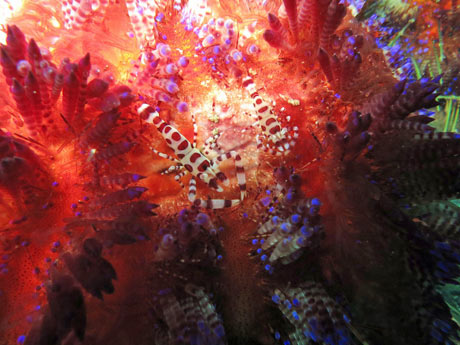Reviews: "Love the newsletters! Keep them coming" Janice Fleming...MORE REVIEWS

SCUBA Diving in Thailand
Compare prices of Thailand Liveaboards - book now pay later
1 May 2024
Thailand is a wonderful country with some excellent SCUBA diving. To the west of Thailand is the Andaman Sea, and to the east the Gulf of Thailand. The best dive sites are on the Andaman Sea side, both in the south and further north in the Similan Islands and Richelieu Rock.

Photo credit: Engin Akyurt/Pixabay
Learn all about the Thailand dive sites, diving centres and accommodation. We'd love to hear about your trip to Thailand: Add a Review...
The Coral Reefs
Like in many other areas of the world, Thailand's coral reefs are under significant pressure. However, Thailand is acting to protect its reefs and marine environment. Thailand has adopted the target of 10% of coastal and marine areas to be protected. In 2018, the total coastal and marine protected area was about 5.6% of Thai waters, encompassing 22 national marine parks, 6 coastal non-hunting areas, 160 sites of reserved mangrove forests, 56 marine fishery sanctuaries and 6 environmental protection areas. 1

Photo credit: Tim Nicholson
The Andaman Sea or the Gulf of Thailand?
The best diving in Thailand is in the Andaman Sea, to the west of the country. Here there are 17 marine national parks covering 62% of the coral reefs2. Visit between October and April - all the marine parks (which cover the best diving areas) are closed from May to the middle of October so areas like the Similan Islands are off limits. Even for areas that aren't closed, the diving isn't as good from May to September as this is when the rains come. During this time you are better off visiting the Gulf of Thailand to the east of Thailand.
The Andaman Sea features coral reefs, dense mangrove forests, karst limestone islands and beaches with deep oceanic waters.
How warm is the sea?
Very warm year round - an average of 28o C. The temperature is coolest in January, but even then the temperature stays above 26 o C.
Tourist Visas for Thailand
Tourists need a visa before visiting Thailand. You can obtain a 30 day Visa on Arrival at airports and a 15 day Visa on Arrival if travelling via land borders. It's better to get a visa beforehand though. A tourism visa will then allow a stay of up to 60 days with the possibility to extend it for a further 30 days. You can re-enter Thailand as often as you wish. For full visa rules see the Thai Embassy Site.
Which Currency to Take?
The Thai currency is the Baht. You are generally better off buying Baht when you get to Thailand rather than before. There are currency exchanges at the airport and these and banks will change euros, dollas or pounds for Baht. ATM machines are readily available in tourist areas.
Is Thailand Safe?
The main diving areas are safe to visit. The British Foreign and Commonwealth Office, though, advises against all but essential travel to the Thai-Malaysia border in the southeast provinces of Pattani, Yala, Narathiwat and Songkhla. For up-to-date advice see the foreign travel advice. Another thing to bear in mind is that by law you must carry your passport with you at all times. Take out comprehensive travel and medical insurance before you travel.
The Diving
More details of Thailand dive sites…
Two dive sites you shouldn't miss are in the Southwest: Hin Daeng (Red Rock) and Hin Muang (Purple Rock). These world-class diving sites deserve to be in every divers' top 10. Other places to target are the Similan and Surin Islands.

Coleman's shrimp. Photo credit: Arhnue Tan/Pixabay
When to dive Thailand? From October to April is the best time for the Andaman Sea. Giant Manta Rays arrive at the Similans in March and April. At Richelieu Rock you might also be lucky enough to see whale sharks during this time. Come May though, heavy rainfall hits the West coast of Thailand and continues until September. Plus the marine reserves which host most of the best diving are closed from May to the middle of October. During this time of year, the Gulf of Thailand to the east of the country is a better option. The best diving on this side is around Koh Tao, although it can be very crowded.
Thailand has something for everyone, no matter what your diving experience. With over 2000 km of coastline, and hundreds of islands, there are reefs, walls, caves, drifts, swim-throughs, drop-offs, wrecks and pinnacles.
The 5 Best Thailand Dive Sites:
Who to Dive With?
For some of the best diving choose a liveaboard boat for three to seven day trips. Alternatively see reviews of dive operators to choose the best one for you.
References
1Thailand towards sustainable management of marine and coastal habitats, United Nations, 2018
2Thailand's Marine and Coastal Protected Area, International Coral Reef Initiative.

